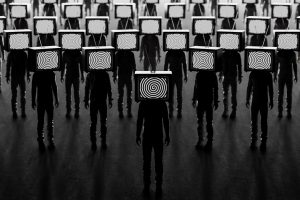Introduction
On June 22, 2023, a federal court in New York (“Court”) issued sanctions against two lawyers and a law firm for submitting “non-existent judicial opinions with fake quotes and citations created by the [generative] artificial intelligence tool ChatGPT.”[1] The lawyers and their firm were jointly fined $5,000 and ordered to mail individual letters to each judge wrongly identified as the author of the non-existent opinions. While the sanctions order has been publicized as a cautionary tale against premature reliance on artificial intelligence (AI) tools,[2] a closer read shows that sanctions were not directed at faulty use of new technology but rather at disregard for well-established principles of professional conduct inherent to the Rule of Law.
Two of the opening sentences of the Court’s opinion capture its essence: “Technological advances are commonplace and there is nothing inherently improper about using a reliable artificial intelligence tool for assistance. But existing rules impose a gatekeeping role on attorneys to ensure the accuracy of their filings.”[3]
While acknowledging that the submission of fake, AI-generated opinions is unprecedented, the Court identified the essential harm committed by the sanctioned lawyers as “abuse of the adversary system” that flowed from the submission of fake opinions.[4] Essentially, the Court sanctioned the involved lawyers and their firm for “abandon[ing] their responsibilities when they submitted non-existent judicial opinions with fake quotes and citations” created by ChatGPT, and, equally for continuing “to stand by the fake opinions after judicial orders called their existence into question.”[5]
Emphasizing long-standing and well-tested principles of the Rule of Law, the decision is an invitation for lawyers to use reliable new technologies—while keeping in mind their professional obligations to safeguard the adversary legal system and honor and uphold principles of the Rule of Law. This article breaks down the Court’s opinion and offers a summary of some of the key principles of the Rule of Law that it invokes.
The Long Road from Reliance on ChatGPT to Rule 11 Sanctions
In February 2022, Steven Schwartz of the Levidow Firm filed suit in the Supreme Court of the State of New York on behalf of a personal injury claimant. This case was removed to the United States District Court for the Southern District of New York. Since Schwartz was not admitted to practice in that district, another attorney from the same firm, Peter LoDuca, filed notice of appearance in the case. Schwartz continued to perform all the substantive legal work for the federal case, with LoDuca merely signing and filing documents authored by Schwartz.
In the course of litigation, Schwartz prepared and LoDuca signed and filed a response to the defendant’s motion to dismiss. This responsive filing, a so-called “Affirmation in Opposition,” was wrongly filed in accordance with New York state and not federal court requirements. [6] It cited and quoted from purported judicial decisions that were said to be published in the Federal Reporter, the Federal Supplement Reporter, and Westlaw. Although LoDuca signed and filed the affirmation, he made no effort to verify the form of the filing or any case law cited therein.
Two weeks later, on March 15, 2023, the defendant filed a response, “impliedly assert[ing]” that cases cited in the plaintiff’s affirmation did not exist and stating that the few cases which the defendant was able to locate did not stand for the propositions for which they were cited.[7] The Court conducted its own search for the cited materials but was unable to locate multiple authorities cited. Neither LoDuca, Schwartz, nor the firm they worked for sought to withdraw the filing or provide any explanation.
In April 2023, the Court ordered plaintiffs to file an affidavit that annexed copies of the cited decisions that raised concerns.[8] Eventually, LoDuca filed an affidavit authored by Schwartz that annexed ChatGPT-generated excerpts of all but one of the fake opinions, which was described as an unpublished opinion. The affidavit was vague about the source of the excerpted materials, stating that the purported opinions represented only what was made available by online database, without identifying any “online database” by name or admitting reliance on ChatGPT.
The Court’s review found that while the fake opinions had some traits that were superficially consistent with actual judicial decisions, (e.g., citing to plausible panels of federal judges, credible docket numbers, and purported citations to case law), blatant stylistic and reasoning flaws on the face of the excerpts made it clear that they could not have issued from a US appeals court. One fake opinion, for example, started off discussing wrongful death claims related to the death of “George Scaria Varghese” only to abruptly shift to discussing claims of “Anish Varghese” who was denied boarding on a flight. The excerpts additionally conflated facts and jurisdictions, contained erroneous citations, and advanced procedural history “border[ing] on nonsensical.” [9]
Thus, the Court’s sanctions opinion sharply focused on the importance of protecting the adversarial process from fake submissions. The Court plainly stated that “if the matter had ended with [the lawyers] coming clean about their actions shortly after they received the defendant’s March 15 brief questioning the existence of the cases, or after they reviewed the Court’s Orders of April 11 and 12 requiring production of the cases, the record now would look quite different.”[10]
Appreciation for the Rule of Law as a Safeguard during Uncertain Times
The sanctions opinion shows that even in cases of clear and obvious failing of technical competence, the Court’s interest remains focused on ensuring the Rule of Law. Rule of Law is defined as the restriction of the arbitrary exercise of power by subordinating it to well-defined and established laws.[11] Traditional principles of the Rule of Law relevant to the Court’s opinion include: the principles of stare decisis, legal certainty, and legal predictability. The Court’s decision connects these principles to legal practice by citing to rules of professional conduct.
“The Anglo-American common-law tradition is built on the doctrine of stare decisis (‘stand by decided matters’), which directs a court to look to past decisions for guidance on how to decide a case before it. This means that the legal rules applied to a prior case with facts similar to those of the case now before a court should be applied to resolve the legal dispute.”[12] Stare decisis is one of the main reasons why lawyers cite to other cases in their briefs and writings, because judges are required to align their decisions with relevant and authoritative precedents. Stare decisis relies entirely on the existence of authentic precedent authored by judges. When stare decisis is undermined, legal certainty is undermined as well. Legal certainty is the principle that requires that the law be clear, precise, and unambiguous, and its legal implications foreseeable. Fake cases disrupt clear laws, provoke ambiguity, and prevent assessment of foreseeable legal implications. Legal certainty implies legal predictability—that adjudication must be predictable. This means that laws must be clear, stable, and intelligible so that those concerned can with relative accuracy calculate the legal consequences of their actions as well as the outcome of legal proceedings.
Justice John Marshall Harlan considered the importance of giving the public a “clear guide,” the value of helping individuals “to plan their affairs,” the benefits of “expeditious adjudication,” and “the necessity of maintaining public faith in the judiciary as a source of impersonal and reasoned judgements” as providing strong indication that courts should respect their own precedents.[13] Perhaps echoing Justice Harlan’s approach, the Court here provides useful illustration of the contemporary impacts:
Many harms flow from the submission of fake opinions. The opposing party wastes time and money in exposing the deception. The Court’s time is taken from other important endeavors. The client may be deprived of arguments based on authentic judicial precedents. There is potential harm to the reputation of judges and courts whose names are falsely invoked as authors of the bogus opinions and to the reputation of a party attributed with fictional conduct. It promotes cynicism about the legal profession and the American judicial system. And a future litigant may be tempted to defy a judicial ruling by disingenuously claiming doubt about its authenticity.[14]
Highlighting the connection between harmful systemic impacts and relevant procedural and ethical legal practice rules, citing Rule 11 of the Federal Rules of Civil Procedure, the Court found that filing papers “without taking the necessary care in their preparation” was an “abuse of the judicial system” subject to Rule 11 sanction.[15] Further, the Court cited Rule 3.3(a)(1) of the New York Rules of Professional Conduct, 22 N.Y.C.R.R. § 1200.0 (NYRPC), which states, “A lawyer shall not knowingly make a false statement of fact or law to a tribunal or fail to correct a false statement of material fact or law previously made to the tribunal by the lawyer.” In highlighting the appropriateness of reliance on other lawyers, databases, and technology, the Court implicitly points to Rule 5.1 NYRPC that imposes obligations on lawyers, particularly firms and direct supervisors, to make reasonable efforts to ensure conformity with these and other rules. The Court even went to the extent of discussing potential violations of criminal law, noting that knowingly passing off false documents as authentic ones issued by the courts of the United States implicates the federal criminal statute prohibiting such conduct. The Court ultimately found that since no fake signatures or seals were submitted, the criminal statute was not invoked, despite noting the strong resonance between the crimes the statute seeks to prevent and the circumstances of the case.[16]
Lawyers in the United States, regardless of where they are barred, have an obligation to uphold principles of Rule of Law. This means while lawyers have an obligation to zealously represent their clients, they are required to fulfill this obligation in a manner that upholds the integrity and fair functioning of the legal system. When it comes to citing precedents, this means that lawyers have an obligation to advance arguments grounded in authentic legal precedent. This includes the obligation to check citations and to locate and review full decisions. This principle extends to all actors in the legal system, whether they are judges, attorneys, or pro se litigants. The adversarial system depends on transparent and open development of the law by judges through an adversarial process. Reliance on fake decisions not only undermines the potential for a fair fight between the parties, but it also undermines the value, certainty, and predictability of a decision.
Generative AI is a type of AI system “capable of generating text, images, or other media in response to prompts. Generative AI models learn the patterns and structure of their input training data, and then generate new data that has similar characteristics.”[17] Consumer-grade generative AI tools, now in the hands of millions of people across the globe, are transforming the way people work, create, and interact with one another.
The law frequently lags behind technological, political, social, and economic developments. This is because creating laws and regulations specific to the new context and challenges takes time, diverse inputs, and planning. When technological change provokes political, social, and economic uncertainty, it also provokes tremendous legal uncertainty—as the nature of legal problems that people face are also transformed. As technology triggers rapid changes, the gap between the law and newly evolving legal problems becomes exponentially bigger.
This lag between technology and the law can often create anxiety around technological change and development. The Court’s sanctions order and opinion shows how a sound appreciation for the principles of Rule of Law can act as a safeguard or safe harbor during times of uncertainty provoked by technological change. In the context of technological change and lagging legal change, new laws, regulations, policies, and guidelines are reliably derived from existing laws, regulations, policies, and guidelines and, therefore, will unwaveringly uphold basic principles of the Rule of Law. Knowledge of and appreciation for what is existing (here the rules of professional responsibility) can help lawyers better navigate uncertainty, avoid sanction, and achieve more favorable results for their clients.
If you are interested in learning more about the Rule of Law and business, please sign up to take the ABA Business Law Section Rule of Law Working Group’s CLE webinar, available online free for ABA members.
This article is part of a series on intersections between business law and the rule of law, and their importance for business lawyers, created by the American Bar Association Business Law Section’s Rule of Law Working Group. Read more articles in the series.
Mata v. Avianca, Inc., No. 54, 22-cv-1461 (PKC), at 1 (S.D.N.Y. June 22, 2023). ↑
See, e.g., Josh Russell, Sanctions ordered for lawyers who relied on ChatGPT artificial intelligence to prepare court brief, Courthouse News Service, June 22, 2023. ↑
Mata v. Avianca, Inc., No. 54, 22-cv-1461 (PKC), at 1 (S.D.N.Y. June 22, 2023) (internal citations omitted). ↑
Id. at 1–2. ↑
Id. at 1. ↑
Id. at FN 2 (noting that the document Schwartz filed was “a creature of New York state practice” that did not satisfy federal court requirements for opposing a motion to dismiss). ↑
Id. at 5. ↑
Id. at 7. The Court requested the following cases, stating that failure to comply would result in dismissal of Plaintiff’s case: Varghese v. China Southern Airlines Co., Ltd., 925 F.3d 1339 (11th Cir. 2019); Shaboon v. Egyptair, 2013 IL App (1st) 111279-U (Ill. App. Ct. 2013); Peterson v. Iran Air, 905 F. Supp. 2d 121 (D.D.C. 2012); Martinez v. Delta Airlines, Inc., 2019 WL 4639462 (Tex. App. Sept. 25, 2019); Estate of Durden v. KLM Royal Dutch Airlines, 2017 WL 2418825 (Ga. Ct. App. June 5, 2017); Ehrlich v. American Airlines, Inc., 360 N.J. Super. 360 (App. Div. 2003); Miller v. United Airlines, Inc., 174 F.3d 366, 371-72 (2d Cir. 1999); In re Air Crash Disaster Near New Orleans, LA, 821 F.2d 1147, 1165 (5th Cir. 1987); and Zicherman v. Korean Air Lines Co., Ltd., 516 F.3d 1237, 1254 (11th Cir. 2008). ↑
Id. at 11. ↑
Id. at 2. ↑
See also further articles from this series: John H. Quinn, Rule of Law – What is It?, Business Law Today, (Sept. 3, 2021); Kimberly Lowe, The Business Lawyer and the Rule of Law – The Rule of Law Is Our Business, Business Law Today, (June 29, 2021). ↑
Mortimer N.S. Sellers, The Doctrine of Precedent in the United States of America, 54 Am. Journal Compar. L. 67, 87 (2006) (citing Moragne v. States Marine Lines, 398 U.S. 375, 403, 90 S.Ct. 1772, 1789 (1970)). ↑
Mata v. Avianca, Inc., No. 54, 22-cv-1461 (PKC), at 1–2 (S.D.N.Y. June 22, 2023). ↑
Id. at 22 (internal citations omitted). ↑
Id. at 23-4. This portion of the Court’s opinion should be of particular interest to counsel advising on development of generative AI projects, as it suggests that any AI hallucinations that fabricate court judgments to include court signature and seal might potentially lead to criminal charges. See also Dredeir Roberts, How General Counsels Battle the Weaknesses in the United States Rule of Law, Business Law Today (Aug. 12, 2022). ↑
Generative Artificial Intelligence, Wikipedia. ↑





